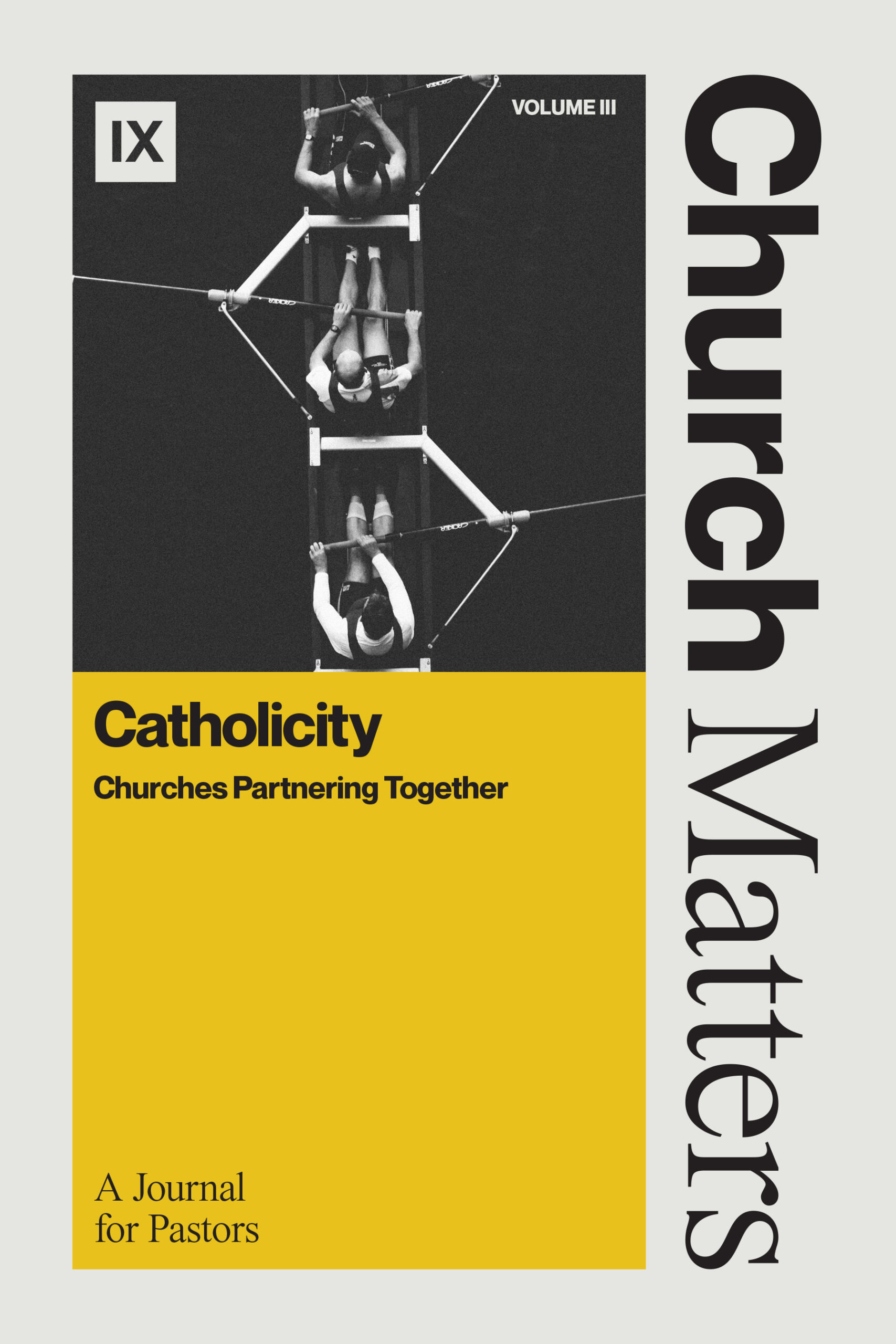Single Assembly: Advancing the Gospel by Investing in Other Churches
“There are many ways to skin a cat.” It’s a strange saying, isn’t it? I mean, who does that anyway! Even still, the idea finds purchase in conversations about fulfilling the Great Commission and multisite. The Great Commission is the cat, people say, and whether your church meets as a single assembly or in multiple sites and services are just different ways to skin it.
I fundamentally disagree. I think the single assembly folks are right to argue that, a church is a single assembly.[1] However, the purpose of this article is not to lay out the biblical case for single-assembly. Instead, it is to explain why this is ultimately the best model for accomplishing the Great Commission. In short, I believe a single assembly model moves churches toward greater catholicity, which in turn encourages evangelism and extends God’s kingdom.
Single assembly does this in at least two ways.
(1) Single assembly forces churches to overflow outward.
Admittedly, single assembly reduces your options. When your building is at capacity, you simply have to send members elsewhere or start a building project. Maybe you strategically send members to a struggling, like-minded church down the road. Maybe you plant a church in an area without a gospel witness. Maybe you plant another church in the same building.
At first blush, these options sound much harder than simply starting another service. But the point is simple: single assembly convictions force you to invest in other churches. It forces your church to be catholic. And that’s a good thing. After all, the gospel advances through churches investing in other churches, not by merely accumulating more influence and resources for themselves.
Investing in others protects us from being too preoccupied with ourselves. Rather than encouraging us to primarily invest inward, single assembly forces us to overflow outward and, in the process, hand over control and credit to other churches.
(2) Single assembly frees churches to invest in others.
Adopting single-assembly convictions means accepting the boundaries of our bodies. A church in London or Los Angeles needs other churches to help evangelize their cities. They can’t do it on their own. And yet, the implication of multi-site/service models is that the best way for the lost in your town, city, or country to hear the gospel is the expansion of one particular empire, the reduplication of one particular brand. Such models encourage centralization of power and accumulation of influence. They celebrate the existence of “sites” that are essentially sustained by and subservient to a central hub.
Of course, we must be careful not to imply that multi-site/service churches always fall prey to such pitfalls. I know many multi-site churches who generously invest in others. Nevertheless, we must see the implicit temptation in the model to mistake the growth of God’s Kingdom to the growth of one particular church or group of churches. And this seems to be more of a feature than a bug.
Single assembly prohibits this kind of empire-building. With a single assembly, the only relationship one church can have with another is a mutual partnership. Consciously owning this reality encourages the pursuit of such partnerships.
What does partnership mean? For our congregation, it means pointing members toward other churches that may be closer to where they live. It means raising up elders for other churches. It means investing in fraternals of pastors and associations of like-minded churches. It means generously distributing our resources by supporting plants and revitalisations, by lending or giving buildings to other congregations, and by regularly sending preachers or musicians to support other churches.
Obviously, multi-site/service churches also do these things. But again, single-assembly convictions free you to invest in others as your only strategy for advancing the gospel beyond your own building.
How has the gospel advanced across the ages?
If this strategy seems strange or even quaint today, we should remember that this is precisely how the gospel has advanced throughout history. For example, New Testament churches advanced the gospel by investing in other churches. Consider revisiting the following passages with this in mind: Acts 14:21–23; Romans 16:1; 1 Corinthians 16:1; 2 Corinthians 8–9; 2 Timothy 2:2; Titus 1:5.
More recently, Charles Spurgeon serves as a great example of the strengths of single assembly. Spurgeon certainly maximized the capacity of his building at the Metropolitan Tabernacle. It became the largest Baptist congregation anywhere in the world in his day. However, while they regularly turned hundreds away from services for lack of space, they never employed multiple sites or services. One wonders why such a preeminent evangelist never thought to do this. Perhaps the instinct is more modern than we realize.
But Spurgeon didn’t simply shrug his shoulders and put his head down. He embraced the blessed limitations that single assembly brings. He encouraged members to join hundreds of church plants and revitalizations, raised up countless workers for other congregations, and regularly preached at other churches. Spurgeon set about growing a great forest of churches, rather than limiting his investment to a single sprawling tree. Even after his own church declined in health and strength, his investment in other congregations bears fruit in London and around the world today.
We should follow his example. Rather than a sprawling multi-site brand, we should aim to plant a forest of churches that may stand as a witness to the gospel long into the future.
* * * * *
[1] For an argument on why the Bible necessitates single assembly churches, see Jonathan Leeman’s One Assembly (Crossway: 2020).
Related Multimedia

The Great Commission Is Bigger Than Your Church
By Bobby Jamieson









